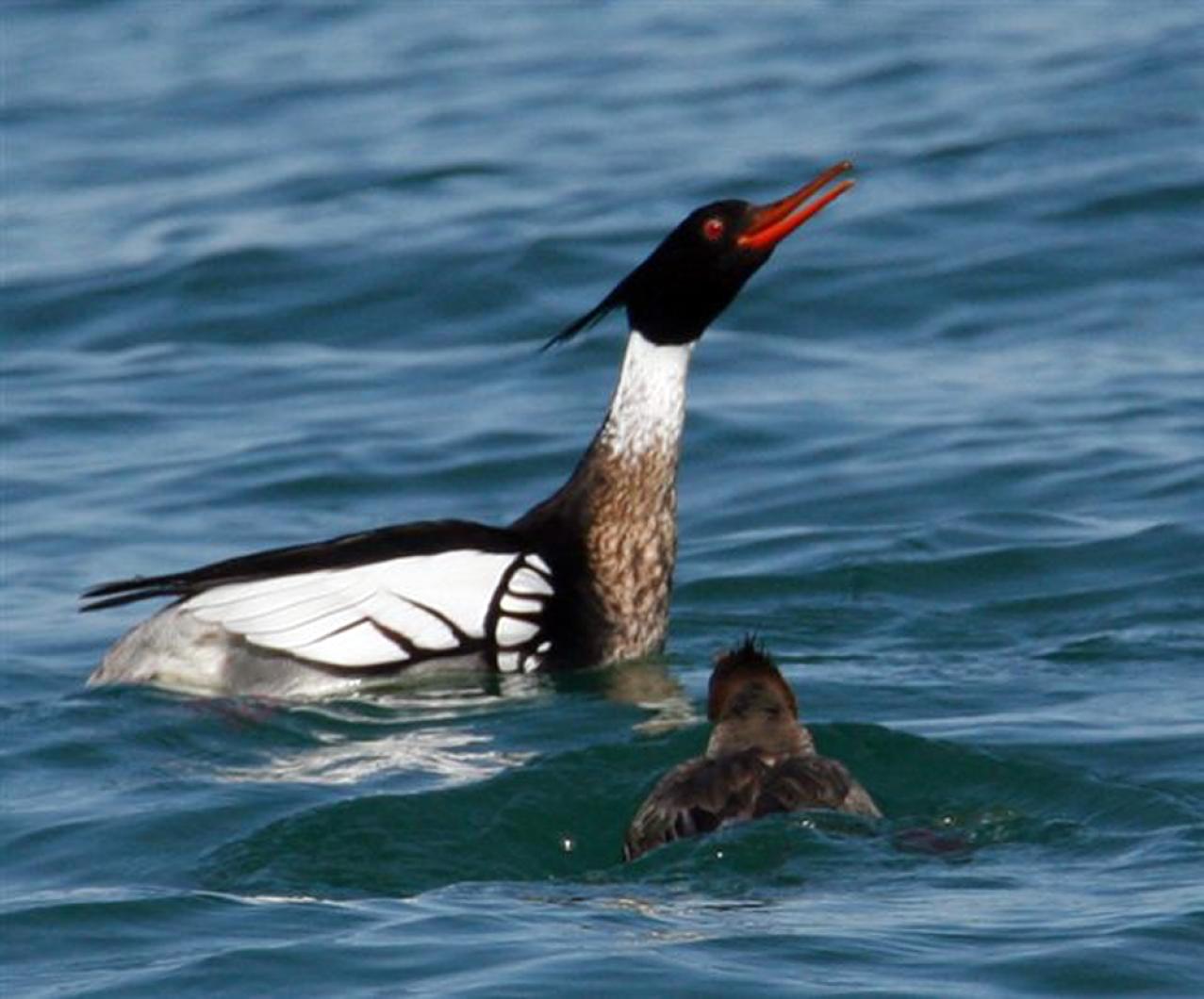Sounds of water running in the gutters were unmistakable. It was the night of Feb. 7, and the skies were clear, so the source of the water was not a rainstorm. It was the sound of melting snow and ice draining off my roof; a welcome sound to my ears as it optimistically signifies that the winter’s deep freeze is over.
This meltwater is but one of the many signals of the coming spring.
Perhaps the most obvious is the length of daylight. At least on clear days it is still light out at 5:30 p.m. Such a welcome change from December’s dreary dark by 4:30! Of course it is light earlier in the morning too, but that change is not as obvious to many of us.
Increasing day length is obvious to the birds, and this is one of the cues that cause their behavior to change. Birdsong is now a daily occurrence, as the birds are beginning to get ready for the upcoming breeding season. The chorus of chickadees, tufted titmice, cardinals and Carolina wrens is getting louder and more persistent.
Another behavioral change can be seen when you come across a flock of common goldeneyes in the Sound or on one of our coastal ponds. Watch the males for a while and you will see them move their heads backward so far that they almost touch their backs, then stretch their necks straight up as far as they can, before returning to a more normal posture. The sounds they make, a rasping nasal whistle — eeeee-ep — is an eerie sound that is clearly audible, especially if many males are courting at the same time.
Of course other ducks are doing similar displays. The courtship antics of male red-breasted mergansers are also easy to observe.
Birds are also getting ready for their northward migration. Many species of migratory birds are using the increased day length to begin preparing for an arduous trek northward to their breeding grounds. Our first migrating red-winged blackbirds will be here by the end of February, a true sign of the coming spring.
Our winter resident robins — there are a lot of them this year — are getting ready for their northward migration too. Seeing these birds is not a sign of spring, as they are getting ready to leave on their northward migration into Canada, where they nest. The April arrival of our breeding robins will be marked by their appearance in pairs in our yards and we will hear their loud and melodious song.
There is another easily observed sign of warmer temperatures. With the ground once again visible and much of the snow and ice melted, people are more likely to venture outdoors. This was clearly visible on Feb. 8, when temperatures reached 50 degrees and hiking trails and trailhead parking lots were once again busy.
Yet another sign of the coming spring is an opportunity to participate in the Great Backyard Bird Count, which starts today and continues through Feb. 16. All you need to do is to watch and count birds for at least 15 minutes at your feeder, then submit your results online at birdsource.org/gbbc/. Submitting multiple checklists — for different days or different locations — is encouraged. Last year 85,787 checklists were submitted, reporting sightings of 634 species and 9,807,216 birds.
Daytime temperatures are forecast to be near 40 degrees for the next few days, so go outside to look and listen.
Bird Sightings
On Feb. 4, Roger Cook was wading around in the Herring Creek near Crackatuxet Cove when he flushed an American bittern. He provided a good description of the bird and was able to photograph it, which is good since it is the first Island record for February. And this sighting is even more unusual since it has been such a cold and icy winter so far, making its food of fish and other aquatic animals rather more difficult to catch. He was able to find the bittern again on Feb. 6.
He also observed a barn owl hunting at Katama in the daytime on Feb. 4. This happens fairly regularly, perhaps especially when snow and ice make finding mice a little more difficult. These owls must be very wary of crows, who will readily harass and dive-bomb these owls.
Katherine Colon and Laurie Walker observed a horned grebe at Lobsterville on Feb. 9.
On Feb. 10, I searched through a number of flocks of gulls in Vineyard Haven and Oak Bluffs. One first winter Iceland gull was found within a flock of herring, great black-backed, and ring-billed gulls at Crystal Lake. This species is notable as it is slightly smaller than a herring gull, generally whitish with very light brown streaking and does not have the black wing-tips of almost all other gulls. I also observed many flocks of robins and quite a few flickers.
Tom and Barbara Rivers reported a bald eagle flying by their house in Chilmark on Feb. 10.
The rest of the bird news for this week relates to birds at feeders. Carolyn Flynn reports two eastern bluebirds at her feeder in Edgartown. Ginger Norton had a hermit thrush at her feeder in Edgartown on Feb. 11. Tim and Sheila Baird have had a brown thrasher and a fox sparrow visiting their feeder for the past week or so. And Gus Ben David reports a tree sparrow coming to his feeder — the first one he has had all winter. He also has enormous numbers of American goldfinches and some pine siskins still coming to his feeder. The siskins I had at my feeder in January have disappeared.
Please call in your sightings to the bird line at 508-627-4922. We will not know about it if you do not tell us.
Robert Culbert is a bird tour leader and ecological consultant living in Vineyard Haven.





Comments
Comment policy »